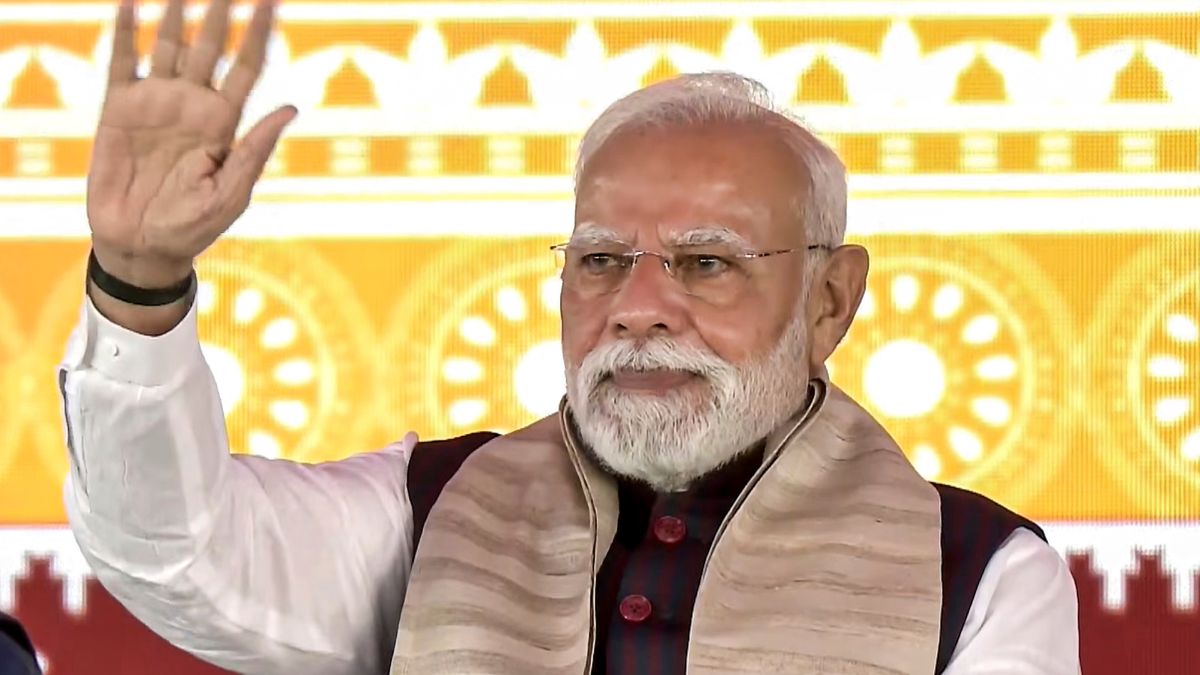Prime Minister Narendra Modi on Saturday (September 27) launched Bharat Sanchar Nigam Limited’s (BSNL) ‘Swadeshi’ 4G stack. He also rolled out over 97,500 mobile towers built with the state-owned telecom operator’s indigenous technology stack.
Along with this, he inaugurated development projects worth more than Rs 60,000 crore in Jharsuguda, Odisha, during his sixth visit to the state in 15 months since the Bharatiya Janata Party (BJP) came to power there in June 2024. The launch of BSNL’s 4G stack is a big boost to telecommunication infrastructure.
We will explain.
BSNL’s indigenous 4G stack
PM Modi launched BSNL’s ‘Swadeshi’ 4G stack on the occasion of the telephone operator’s silver jubilee.
A 4G stack is the collection of hardware and software components that ensure calls connect, seamless data flow and robust internet connectivity.
The India-made 4G network is “fully software driven, cloud-based, with future-ready design and seamlessly upgradable to 5G ,” according to the Ministry of Communications. The BSNL’s stack, featuring a Radio Access Network (RAN) developed by Tejas Network, a core network by C-DOT, and integrated by TCS.
The PM also commissioned 97,500 mobile 4G towers, including 92,600 4G technology sites of BSNL. These towers are spread across Odisha, Andhra Pradesh, Uttar Pradesh, Maharashtra, Rajasthan, Assam, Gujarat and Bihar.
They have been built at a cost of around Rs 37,000 crore with indigenous technology.
“No part of India will be left untouched”, Communications Minister Jyotiraditya Scindia said a day back, adding that these 4G towers are already serving 22 million (2.2 crore) customers across the country.
Modi also unveiled India’s 100 per cent 4G saturation network through Digital Bharat Nidhi, where 29,000 to 30,000 villages are connected in a mission-mode project.
During the event in Odisha, the PM said, “We decided that this important technology of the telecom sector should be developed in India. It is a matter of pride that BSNL has developed a swadeshi 4G technology."
He added, “Swadeshi 4G network begins today from here, as part of which 100,000 4G mobile towers have been set up across the country. Border districts and far-fetched villages, where high-speed internet and connectivity were an issue, will greatly benefit from this. Our soldiers will also be able to use safe indigenous services for connectivity…”
Why BSNL’s India-made 4G towers matter
With the launch of BSNL ’s indigenous 4G stack, India has entered a league of nations, including Denmark, Sweden, South Korea, and China, which manufacture homegrown telecom equipment.
“The rollout of the ‘swadeshi’ 4G network is a transformative step in line with the Prime Minister’s vision of a Digital India, bridging the digital divide and empowering rural communities, while paving the way for BSNL’s 5G upgrade and integration”, an official statement said, as per PTI.
The 4G network will cover more than 26,700 unconnected villages, including 2,472 in Odisha, in remote, border and left-wing extremism-affected areas. With this, there will be 20 lakh new subscribers, the statement added.
Many of these towers are solar-powered, making them India’s largest cluster of green telecom sites. This is a giant step forward for India in sustainable infrastructure.
With inputs from agencies
)